4 Health Benefits of Drinking Matcha (Including Weight Loss)
Learn about the potential benefits of drinking matcha green tea, including why it won’t make you as jittery as coffee and can even help you focus and relax. Research also suggests that matcha may help with weight loss.
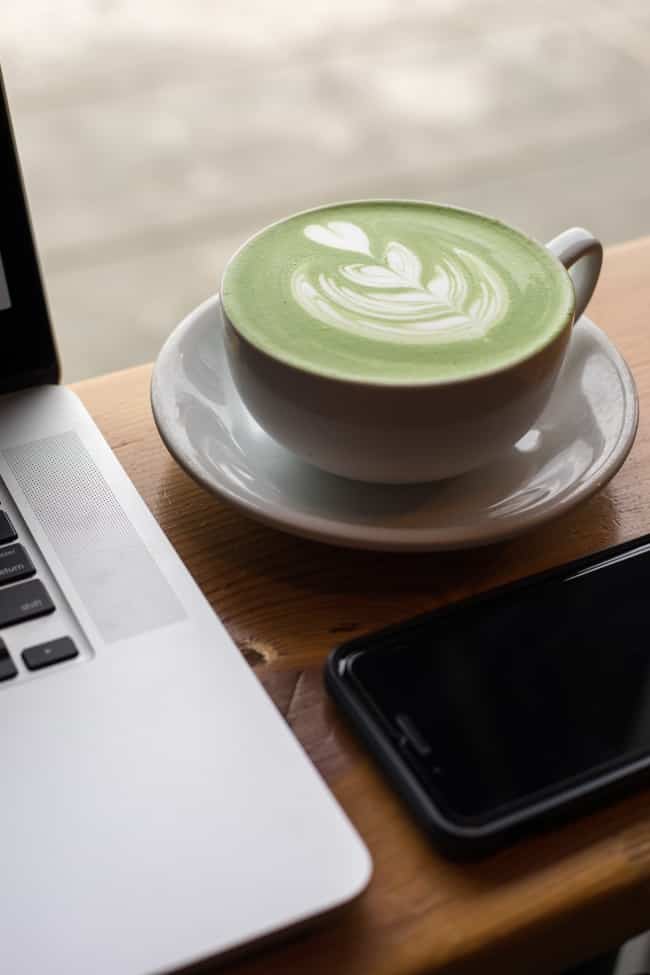
Matcha green tea has experienced some mainstream success in recent years.
Originally used in Japanese tea ceremonies, matcha is far more widespread now. You may recognize it as the frothy, vividly green drink ordered at modern coffee shops.
Matcha green tea is a finely ground powder made from young, specially grown green tea leaves. Matcha powder is made from the whole tea leaf, which increases its antioxidant and caffeine content compared to regular, steeped green tea.
The flavor of matcha green tea differs vastly depending on what grade of tea you use, but it’s generally known for its grassy, earthy, and slightly umami flavor. This green tea powder can be diluted with milk to make a matcha latte, or mixed with sweeteners to soften the bitterness. Try my recipe for Matcha Coffee!
Origins of Matcha
Matcha green tea originated in the Tang Dynasty in Japan, beginning in the 7th century, but was popularized by the Song Dynasty several hundred years later.
Matcha came about as a way to make transportation and trading of green tea leaves easier by powdering them and forming them into blocks. In the 16th century, matcha became the tea of choice for traditional Japanese Tea Ceremonies.
Today, authentic matcha is still primarily grown and produced in Japan. Green tea (even powdered green tea) may be grown in China, Japan, and several other surrounding countries–however, true matcha is grown using a different method and is only grown in Japan.
While standard green tea is grown in the sun and includes the veins and stems of the leaf, matcha green tea is grown mostly in the shade, de-stemmed and de-veined, and stored in darkness for several months to cultivate and preserve the flavor and health benefits.
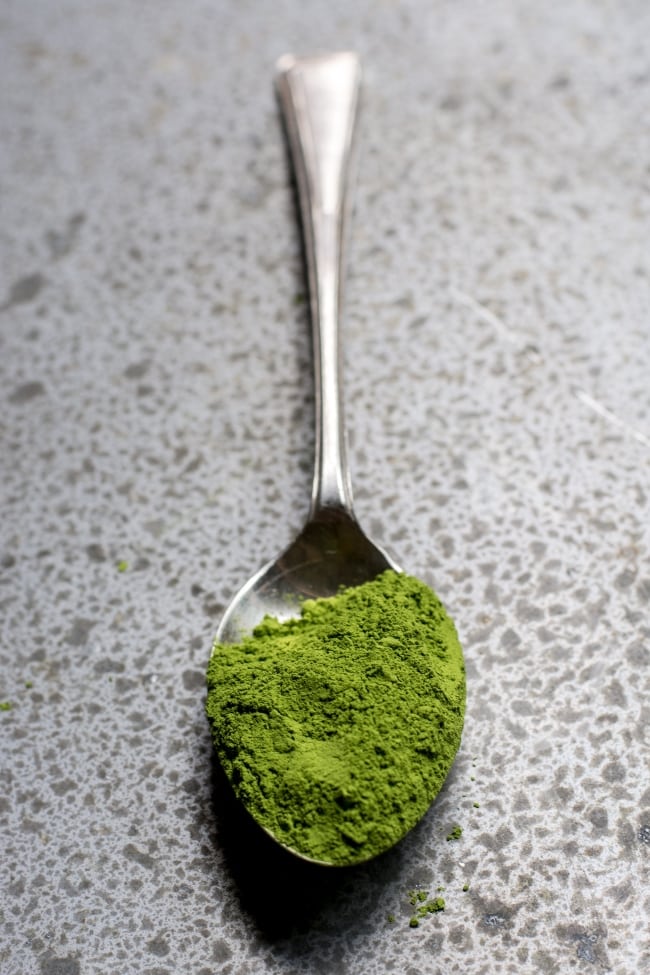
Caffeine in Matcha
Matcha does have a significantly higher caffeine content than regular steeped green tea. One serving of matcha (about 1 teaspoon) contains roughly 70mg of caffeine, compared to the 30-40mg in steeped green tea.
Matcha is higher in caffeine because the immature tea leaves used to make it contain more caffeine than the mature leaves in regular green tea. The high caffeine content is also due to the fact that matcha is more concentrated than steeped tea.
One of the benefits of the higher caffeine levels in matcha may account for its effectiveness with weight loss and weight management after weight loss.
Matcha Health Benefits
Both matcha and coffee have benefits and drawbacks.
Many people who switch from coffee to drinking matcha prefer matcha as they find it reduces stress and anxiety. Here is some more in-depth information about the potential health benefits of drinking matcha, especially as it relates to drinking other types of caffeinated beverages.
1. No Caffeine Crash
Matcha’s caffeine content is mitigated by its amino acid content. Matcha also lower in caffeine than coffee, containing only 70-80 mg per one teaspoon serving compared to an average of 100-200 mg per eight-ounce serving of coffee.
However, most coffee drinkers consume far more than eight ounces in one sitting, and American coffee drinkers consume about three cups a day. If you drink three standard-size mugs of coffee (anywhere from ten-twenty ounces each), you could be consuming upwards of 400mg of caffeine per day.
Even if you drink a similar amount of matcha, you likely won’t crash as badly because matcha’s caffeine content is accompanied by cognition-enhancing amino acids that may even help reduce anxiety.
2. More Nutrients and Health Benefits
Matcha is especially high in catechins (a form of antioxidants) and amino acids.
One study has found that matcha has 137 times the amount of catechins that green tea has. Read more about the catechin EGCG. Antioxidants can help reduce free radicals in the body and also support your body’s natural detoxification efforts.
Matcha also contains the amino acids l-theanine, arginine, and glutamate, all of which have been found to have anxiety-reducing and cognition-enhancing effects.
3. Reduced Anxiety
Drinking matcha may help mitigate your anxiety and stress in two ways.
First, it contains less caffeine than coffee and that caffeine is more slowly absorbed into your bloodstream. If you’re switching from coffee to matcha green tea, the lower amount of caffeine may instantly make anxious feelings decrease.
Second, l-theanine is a powerful stress-reducing compound and is found in matcha in concentrated amounts. You may feel calmer with more even energy levels after you drink a cup of matcha green tea.
4. Weight Loss Assistance
While the caffeine in matcha green tea may help increase energy and therefore help with increased activity and weight loss, studies also show that the catechins in matcha can increase fat oxidation.
But, you do need to be mindful about how you prepare your matcha if you are trying to lose weight. If you add a ton of sugar, then your matcha latte may actually sabotage your weight loss efforts.
Read my other weight loss tips for women.
Making Matcha
Matcha is pretty easy to make! While the traditional preparation is very specific, it’s also a relaxing ritual. Set yourself up for success by purchasing the proper equipment, which includes a matcha whisk (known as a Chasen, a tea bowl, tea ladle, and a strainer.
A quick matcha ritual involves scooping your tea into the strainer and sifting it into your tea bowl. You’ll then pour your boiling water over the powder and use your whisk to mix together until the matcha is frothy. Check out this matcha whisk.
Most people don’t enjoy drinking matcha straight, as it can have a strong grassy flavor. If you do want to add a sweetener to your matcha, consider these healthy sugar substitutes.
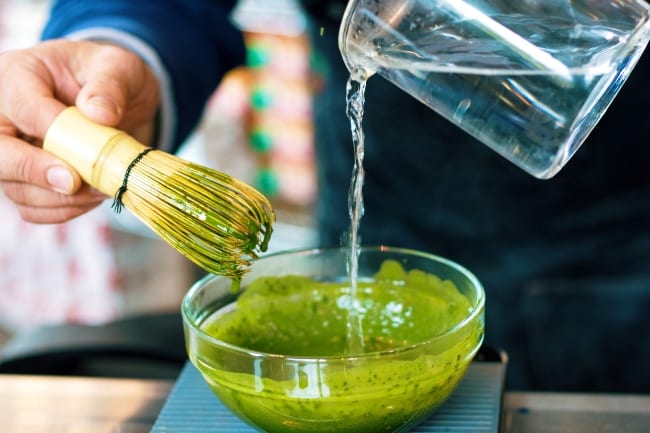
Buying Matcha
Matcha has become much more widely available as it’s been popularized in the media. You can find matcha on the shelves of health food stores, in tea shops, and online.
When buying matcha, be sure you’re purchasing a grade suitable for your purposes.
Grades refer to where on the bush the leaves were harvested; ceremonial grade matcha is the highest quality, made from the tender leaves on top of the bush. Premium grade is suitable for drinking as well, while culinary grade may have a bitter taste. Culinary matcha should not be used to drink straight.
You should also keep an eye on where your matcha was grown and how it was grown; you’ll get the best taste and benefits by investing in quality Japanese matcha.
As mentioned, the best matcha tea comes from Japan. I like to buy organic, including these brands:
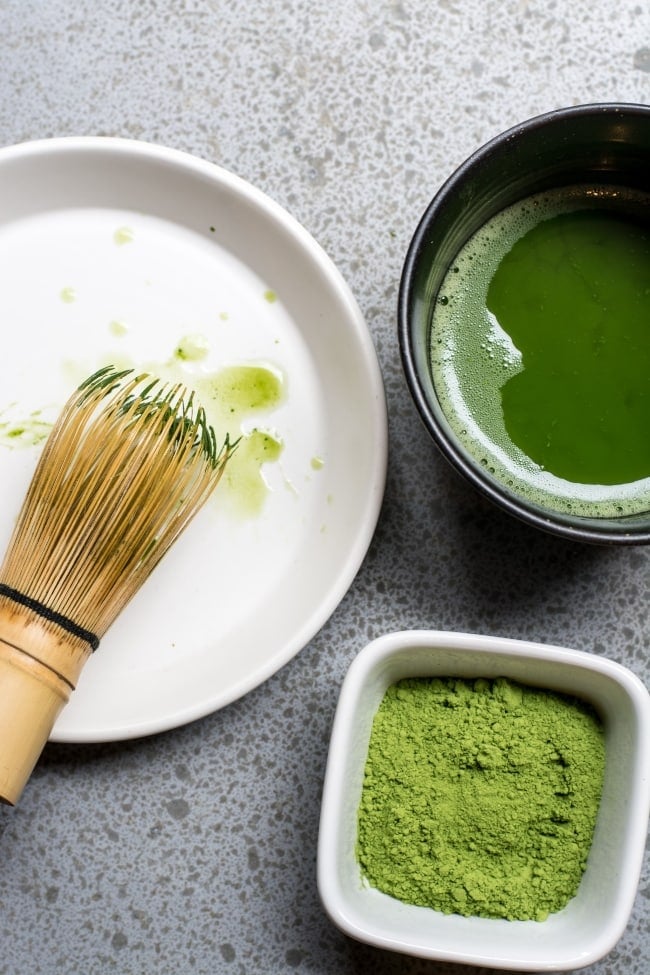
Choosing a Whisk
A Matcha whisk is also known as a Chasen. Made from bamboo, a Chasen is made of many tightly-packed tines forming an outer core and an inner core. Using a traditional bamboo Chasen to whisk your matcha will ensure your drink is smooth and frothy.
Care for your Chasen by cleaning it thoroughly and allowing it to dry fully after each use. Replace as needed to ensure the best results. A fun tip is that you can control the flavor and consistency of your matcha with your Chasen! Whisking your mixture in a circular motion will result in a thinner, smoother tea while whisking in an ‘M’ shape will provide a frothier drink.
Note: if you don’t want to use a thick, no worries. But, you’ll get the frothiest best results if you can stir your matcha tea well. Check out my dairy-free Matcha tea latte recipe or see the best matcha drinks at Starbucks if you don’t want to make your own.
Potential Side Effects of Matcha
Though matcha is deemed a superfood by some, it does have its drawbacks. Matcha is not suitable for everyone, including pregnant women and children. Here are some common side effects you may want to consider before incorporating Matcha into your diet:
- Anxiety/overstressed adrenals: While matcha has less caffeine than coffee, it’s still caffeinated and can be easily overconsumed. Those prone to anxiety and stress may want to avoid caffeine altogether. If you don’t currently consume any caffeine, go slowly when incorporating matcha, and monitor your reactions.
- Potential lead contamination: green tea is more likely to absorb and hold lead. Opinions vary and no official studies have been conducted, but frequent matcha consumption may put you at higher risk for lead poisoning.
- Bloating: Matcha can potentially cause bloating or gassiness in some individuals due to its caffeine content, the added fiber from consuming the whole tea leaf, and additives like dairy or sweeteners used in preparation. While not common, any new food or beverage can affect individuals differently based on their digestive system. If you experience discomfort from matcha, consider adjusting your intake, preparation, or consulting with a healthcare professional.
FAQs About Drinking Matcha
As long as you can handle the caffeine in matcha, you should not have any negative effects from drinking matcha. In fact, if you drink matcha everyday, then you may likely experience some health benefits.
Matcha is expensive because it comes from Japan and has to be hand-picked. You get what you pay for, though. Be sure to always pick a high-quality matcha (see specific brand recommendations above).
It shouldn’t, but it can effect everyone differently. If you can drink coffee without digestive upset, then matcha shouldn’t bother you. That said, be cautious about what you add to your matcha. If you add cream or milk, you might experience gas or bloating. Check out my vegan and dairy free matcha latte recipe.
More Matcha Resources
Conclusions
If you’re hooked on coffee but always feeling stressed out, it might be time to consider trying matcha green tea instead of coffee. There are some recognized benefits to matcha that can help induce a state of calm and focus. Research also shows that matcha may help with weight loss.
Don’t forget to join my newsletter list to get exclusive clean eating recipes and tips. The newsletter is 100% free with no spam; unsubscribe anytime.
Note: this post is for informational purposes only and is not intended as medical advice. Please consult your healthcare provider for recommendations related to your individual situation.
About the Author: Carrie Forrest has a master’s degree in public health with a specialty in nutrition. She is a top wellness and food blogger with nearly 10 million annual visitors to her site. Carrie has an incredible story of recovery from chronic illness and is passionate about helping other women transform their health. Send Carrie a message through her contact form.


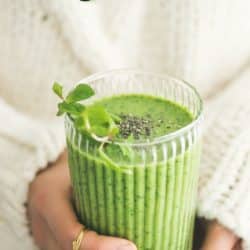
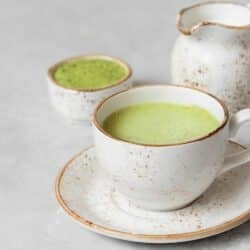







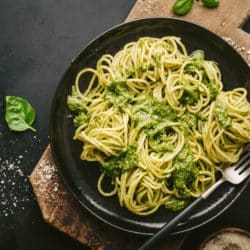
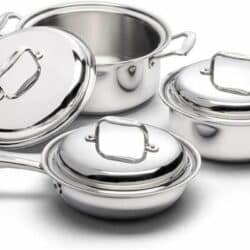
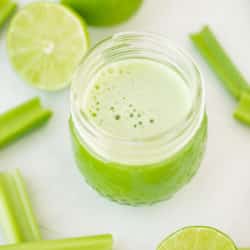

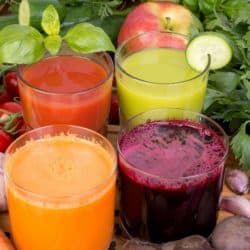





I try to lower my overall caffeine intake during pregnancy. Matcha sounds like a great option!
Wow this sounds really good for you. I have heard about it but not in depth. I drink coffee nearly every day.